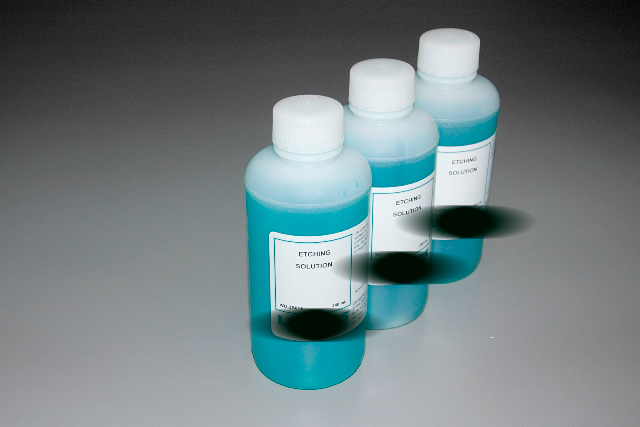
PCBs (Printed Circuit Boards) are essential components of modern electronic devices, providing a platform for connecting and controlling the various components and circuits that make up the device. PCBs are typically manufactured using a chemical process that involves etching the copper traces and pads on the board using a chemical solution. While this process is generally safe and effective, there are some cautions that should be taken when handling and working with the chemicals involved.
Choose the right etching solution: There are several different types of etching solutions available, each with its own properties and advantages. Some of the most commonly used etching solutions include ferric chloride, ammonium persulfate, and sodium persulfate. Before selecting an etching solution, consider the type of PCB you are manufacturing, the desired trace widths and depths, and the cost and availability of the solution.
Ventilation: The PCB etching process can produce harmful fumes and vapors, which can be toxic if inhaled in large quantities. It is essential to work in a well-ventilated area, preferably with an exhaust hood or other ventilation system, to prevent the buildup of fumes and vapors.
Cleanliness: PCBs must be thoroughly cleaned after the etching process to remove any residual chemicals and prevent contamination. Use a suitable cleaning solution and ensure that all equipment, tools, and surfaces are cleaned regularly to maintain a safe and clean working environment.
Dilution: Etching solutions are typically used in a diluted form, as the concentrated solution can be too aggressive and damage the board. It is essential to dilute the solution correctly, following the manufacturer’s instructions and using the correct ratio of solution to water. Be sure to use distilled or deionized water, as tap water may contain impurities that can affect the etching process.
Temperature: The temperature of the etching solution can have a significant impact on the etching process, affecting the speed and quality of the etch. Most etching solutions work best at a specific temperature range, typically between 35°C and 50°C. Use a thermometer to monitor the temperature of the solution and adjust as needed to maintain the desired temperature.
Agitation: Agitation of the etching solution is important for ensuring an even and consistent etch. This can be achieved by using an agitation system, such as a pump or bubbler, or by manually agitating the solution using a stirring rod. Ensure that the agitation is not too strong, as this can damage the board, or too weak, as this can result in uneven etching.
Safety measures: It is essential to follow proper safety procedures when working with PCB etching chemicals. Store the chemicals in a secure location away from children and pets, and dispose of them properly in accordance with local regulations. Avoid mixing different chemicals or using them in unintended ways, as this can cause dangerous reactions.
Safety: Etching solutions are corrosive and can cause skin and eye irritation, respiratory problems, and other health issues if not handled properly. Always wear protective gear, such as gloves, goggles, and a respirator, when handling etching solutions. Store the solutions in a secure location away from children and pets, and dispose of them properly in accordance with local regulations.
By following these etching solution usage tips, you can help ensure a successful and safe etching process, resulting in high-quality PCBs that meet the required specifications and performance standards.
